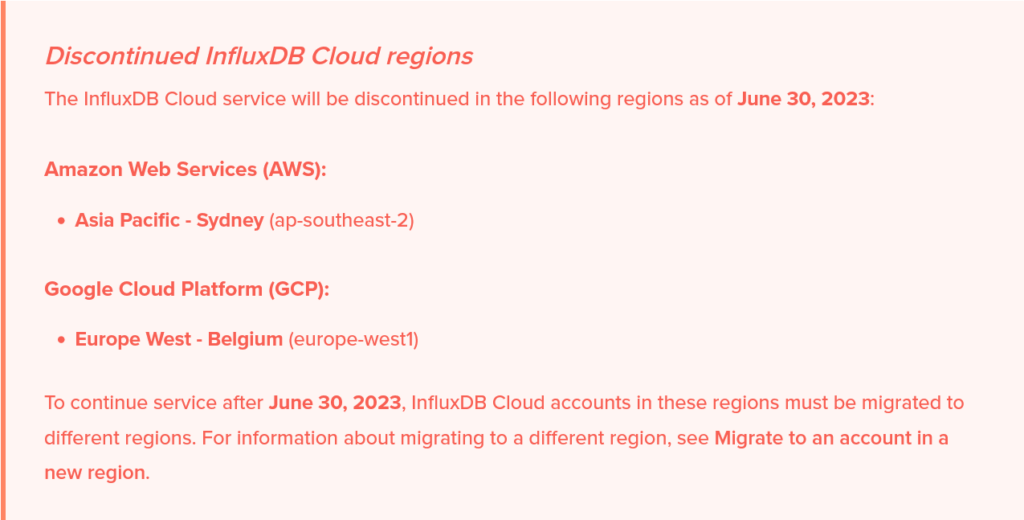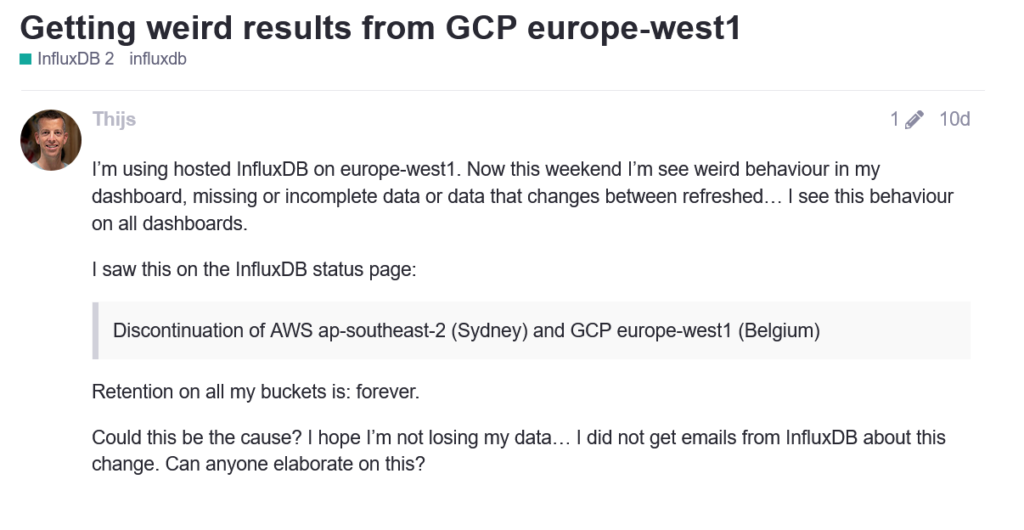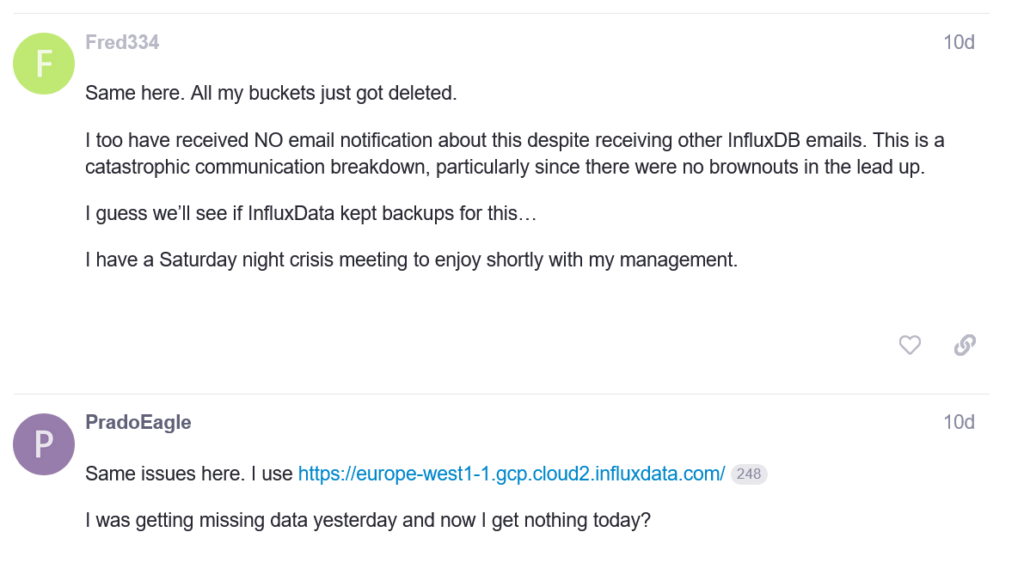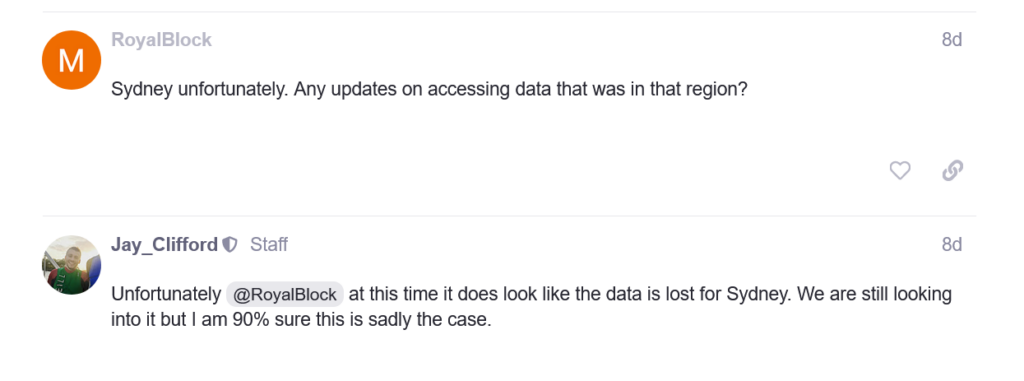Affected Services and Companies by the AWS DNS Outage on October 20, 2025
 So, apart from bean counters constantly purporting that corporations are saving money in the cloud, the general premise is that the cloud is more “resilient” than your own corporate data center, and by offloading that infrastructure to the cloud you are more robust, resilient, and secure. Then… AWS has a major outage and proves all of this wrong.
So, apart from bean counters constantly purporting that corporations are saving money in the cloud, the general premise is that the cloud is more “resilient” than your own corporate data center, and by offloading that infrastructure to the cloud you are more robust, resilient, and secure. Then… AWS has a major outage and proves all of this wrong.
On October 20, 2025, a DNS resolution failure in AWS’s US-EAST-1 region (Northern Virginia) caused widespread disruptions, primarily affecting DynamoDB and cascading to other services like EC2, Lambda, and SQS. The outage began around 3:11 AM ET (12:11 AM PDT) and the core DNS issue was fully mitigated by approximately 6:35 AM ET (3:35 AM PDT), lasting about 3-4 hours at its peak. However, full recovery for many dependent services took longer due to backlogs and cached DNS issues, with some disruptions extending up to 7-15 hours or into the afternoon ET. AWS advised flushing DNS caches to speed recovery, and all services were reported back to normal by around 6:53 PM ET.
Below is a comprehensive list of affected companies and services, aggregated from reports. Downtime estimates are approximate based on user reports and official updates, as exact durations varied by region and service. Services are categorized for clarity.
This list covers over 100 reported services, though not all may have been equally impacted globally. The outage highlighted dependencies on AWS, affecting millions and costing businesses potentially billions in lost productivity. No cyberattack was involved; it was an internal technical fault.
Social Media and Communication
- Snapchat: Down for ~4-6 hours; login and messaging issues.
- Reddit: Down for ~3-5 hours; site access and loading failures.
- Slack: Down for ~3-4 hours; connectivity and messaging disruptions.
- Signal: Down for ~4 hours; messaging outages.
- Zoom: Down for ~3-5 hours; meeting and connectivity issues.
- Discord: Down for ~3-4 hours; partial outages in voice and chat.
- WhatsApp: Partial downtime of ~2-4 hours; messaging disruptions.
- Facebook (partial): Down for ~2-3 hours in affected regions.
- Instagram (partial): Down for ~2-3 hours; loading issues.
- Kik: Down for ~3 hours; app access failures.
- Life360: Down for ~3-4 hours; tracking disruptions.
- Pinterest: Down for ~3 hours; site loading issues.
Finance and E-Commerce
- Coinbase: Down for ~4-6 hours; login and balance issues, but funds safe.
- Venmo: Down for ~3-5 hours; payment failures.
- Robinhood: Down for ~4 hours; trading disruptions.
- Chime: Down for ~3-4 hours; banking app access issues.
- Lloyds Bank: Down for ~2-4 hours; online banking disruptions (UK).
- Bank of Scotland: Down for ~2-4 hours; similar banking issues (UK).
- Navy Federal Credit Union: Down for ~3 hours; account access failures.
- Square: Down for ~3 hours; payment processing issues.
- Polymarket: Down for ~3-4 hours; betting platform disruptions.
- Xero: Down for ~3 hours; accounting software issues.
Gaming and Entertainment
- Fortnite (Epic Games): Down for ~4-6 hours; server and login issues.
- Roblox: Down for ~4-5 hours; game access failures.
- Pokémon GO: Down for ~3-4 hours; app disruptions.
- PUBG Battlegrounds: Down for ~3-4 hours; server issues.
- PlayStation Network: Down for ~3-5 hours; online gaming affected.
- Xbox Live: Down for ~3-4 hours; similar gaming disruptions.
- Steam: Down for ~3 hours; store and multiplayer issues.
- Rainbow Six Siege: Down for ~3-4 hours; Ubisoft Connect affected.
- Dead By Daylight: Down for ~3 hours; game access issues.
- Battlefield (EA): Down for ~3 hours; server disruptions.
- League of Legends: Down for ~3 hours; login failures.
- VRChat: Down for ~3 hours; virtual reality app issues.
- Disney+: Down for ~3-4 hours; streaming failures.
- Hulu: Down for ~3 hours; video loading issues.
- HBO Max: Down for ~3 hours; similar streaming disruptions.
- Prime Video (Amazon): Down for ~4 hours; video access issues.
- Roku: Down for ~3 hours; device connectivity failures.
- IMDb: Down for ~3 hours; site loading issues.
- Apple Music: Down for ~3-4 hours; streaming disruptions.
- Apple TV: Down for ~3 hours; app issues.
- Tidal: Down for ~3 hours; music streaming failures.
- YouTube (minor): Partial disruptions for ~2-3 hours.
Productivity, Media, and Education
- Canva: Down for ~4 hours; design tool access issues.
- Duolingo: Down for ~3-4 hours; app loading failures.
- Perplexity AI: Down for ~4 hours; AI search disruptions.
- CharacterAI: Down for ~3 hours; AI chat issues.
- Microsoft 365 (incl. Outlook, Teams): Down for ~3-4 hours; productivity suite disruptions.
- Wordle: Down for ~3 hours; game access issues.
- Strava: Down for ~3 hours; fitness tracking failures.
- The New York Times: Down for ~3 hours; site and app issues.
- Wall Street Journal: Down for ~3 hours; news access disruptions.
- CollegeBoard: Down for ~3-4 hours; educational platform issues.
- Goodreads: Down for ~3 hours; book tracking app failures.
- Adobe Creative Cloud: Down for ~3-4 hours; design software disruptions.
- Airtable: Down for ~3 hours; database tool issues.
- Asana: Down for ~3 hours; project management disruptions.
- Atlassian (incl. Jira, Trello): Down for ~3-4 hours; collaboration tools affected.
- Canvas by Instructure: Down for ~3 hours; education platform issues.
- Smartsheet: Down for ~3 hours; spreadsheet tool disruptions.
- MyFitnessPal: Down for ~3 hours; fitness app issues.
- Peloton: Down for ~3 hours; workout platform failures.
- Teachable: Down for ~3 hours; online course platform issues.
- Substack: Down for ~3 hours; newsletter disruptions.
- ChatGPT (SSO): Partial downtime of ~3 hours; login issues.
- Postman: Down for ~3 hours; API tool disruptions.
- NPM: Down for ~3 hours; package manager issues.
- GitHub: Down for ~3-4 hours; code repository access failures.
- New Relic: Down for ~3 hours; monitoring tool issues.
- ShipStation: Down for ~3 hours; shipping software disruptions.
- GoDaddy: Down for ~3 hours; hosting issues.
- Shutterstock: Down for ~3 hours; stock media access failures.
- HMRC (UK tax site): Down for ~2-3 hours; government services affected.
Retail, Delivery, and Consumer Services
- Amazon (incl. Alexa, Ring, Blink): Down for ~4-6 hours; smart devices, shopping, and video feeds affected (Ring lingered longer for some users).
- McDonald’s App: Down for ~3-4 hours; ordering issues.
- DoorDash: Down for ~3 hours; delivery app failures.
- Starbucks: Down for ~3 hours; app ordering disruptions.
- Instacart: Down for ~3 hours; grocery delivery issues.
- Lyft: Down for ~3 hours; ride-sharing app failures.
- Grubhub: Down for ~3 hours; food delivery disruptions.
- Fetch: Down for ~3 hours; rewards app issues.
- Whatnot: Down for ~3-4 hours; shopping platform disruptions.
- Zillow: Down for ~3 hours; real estate site issues.
- Ancestry: Down for ~3 hours; genealogy platform failures.
- Eight Sleep: Down for ~3-4 hours; smart bed cooling disruptions.
- Hinge: Down for ~3 hours; dating app issues.
Telecom and Infrastructure
- Verizon: Down for ~3 hours; service disruptions.
- AT&T: Down for ~3 hours; network issues.
- T-Mobile: Down for ~3 hours; mobile service disruptions.
- Boost Mobile: Down for ~3 hours; similar issues.
- Xfinity by Comcast: Down for ~3 hours; internet and TV disruptions.
- Vodafone: Down for ~2-3 hours; telecom issues (international).
Travel and Airlines
- United Airlines: Down for ~3-4 hours; app and minor flight delays.
- Delta Air Lines: Down for ~3 hours; minor delays and app issues.
Other/Miscellaneous
- Fanduel: Down for ~3 hours; sports betting issues.
- Vercel: Down for ~3 hours; serverless functions offline.
- Nintendo: Down for ~3 hours; online services affected.
- Twitch: Down for ~3 hours; streaming disruptions.
Posted in: Cloud Services
Leave a Comment (0) →
 In yet another installment of “Why You Don’t Put Security Infrastructure in the Cloud”. I try to cover these whenever possible, but there are more informative and comprehensive articles out there by other parties such as IPVM that include more detail.
In yet another installment of “Why You Don’t Put Security Infrastructure in the Cloud”. I try to cover these whenever possible, but there are more informative and comprehensive articles out there by other parties such as IPVM that include more detail.


